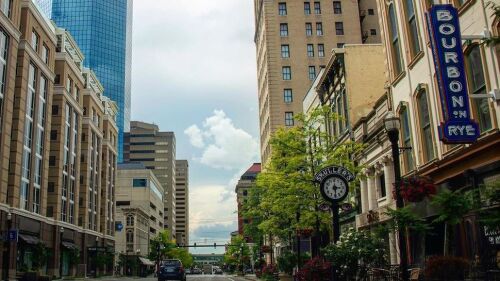While the fall foliage is a beautiful sight as you take a walk or a drive, as a homeowner, it might a looming item on your to do list. Don’t fret — we’re here to re-leaf you of your worries.
We spoke with Jamie Dockery, Fayette County Extension Educator for Horticulture, to learn the best practices for leaf removal in your lawn.
“Nature recycles everything,” said Jamie. “Leaves are nature’s fertilizer. Constantly removing leaves from underneath trees makes it harder for those trees to remain healthy long-term.”
Fall foliage best practices
- Foliage as fertilizer: Add whole leaves to your garden beds. A 6-8" layer of leaves will help add organic matter to your garden, improving soil quality + helping with drainage and aeration.
- Mowing: If you have minimal amounts of leaves, just mow over them. This will allow the chopped-up leaves to fall between the blades of grass, naturally fertilizing the soil. Pro tip: Mow regularly throughout the fall + when the leaves are dry — don’t wait until all the leaves have fallen.
- Consider: If you can’t see your grass due to fallen foliage, your turf will die. Consider a blend of the two above methods for a healthy lawn.
- Composting: This method allows you to keep the leaves off your lawn, while still utilizing their nutrients in your houseplants + landscaping. Learn more about composting, here.
City services
The methods mentioned above are some good options for disposing of leaves in an environmentally-friendly manner. However, the city still has services in place for citizens wishing to fully dispose of falling leaves.
- Yard bags or carts: Waste management will continue to collect waste carts on a regular basis throughout the year. Pro tip: A coupon for yard waste bags was mailed out in the latest issue of the city’s At Your Service newsletter.
- Haley Pike Composting Facility: Citizens can dispose of yard waste at 4216 Hedger Ln., free of charge, through the end of December.












